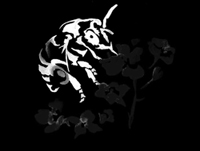What is Pollination?
Pollination is the first step in the process of sexual reproduction in plants. In pollination, a male pollen grain is transferred to the female part of a flower, germinates and fertilizes the ovule. All of these steps must occur for a seed to develop. Without pollination, the production of many of the seeds and fruits that we eat would not be possible.

As in all sexually reproducing organisms, mating in plants results in offspring that contain genes from both parents. Unlike animals, plants cannot seek each other out. They must rely on wind, water, or animals to move pollen between plants. Wind is responsible for pollinating many staple crops such as wheat and corn, but many Ontario crops rely heavily or completely on insects for pollination. Bees are the most commonly discussed pollinators, but many other insects and even vertebrates can play a role (see Pollinators).
Insects that visit flowers are in search of pollen and nectar. Most flowers produce nectar just to attract pollinators. The higher the concentration of sugar in the nectar, the more attractive it is to pollinators. Nectar can also contain other useful compounds such as lipids, amino acids, vitamins, and minerals. Pollen is high in protein, carbohydrate, lipids, and vitamins. It is valuable to some adult insects as a food source, and especially to bees looking for food for their young (larvae). A nectary (nectar-producing organ)is usually positioned within the flower so that visitors to the flower have to contact the reproductive organs to access the nectar.
Plants that can self-fertilize (or self-compatible) can still benefit from cross-pollination because it can lead to more or higher quality fruit. In these plants, self-pollination is often an emergency mechanism in case cross-pollination does not occur. Because plants prefer to invest their resources in cross-pollinated offspring, self-pollination often produces fewer fruit ,or fruit that is smaller or misshapen.
Flower Anatomy & Function
There is an incredible variety of floral shapes in nature, but they are all derived from the same basic structure.
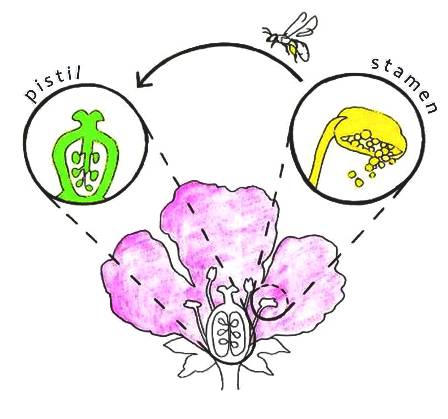
copyright Cara Dawson
All plant reproduction requires that pollen be transmitted to the female organ, or pistil. (The exception is agamospermy, in which a plant produces viable seed without being fertilized.)
Pollen is produced by the male organ, called the stamen. The stamen consists of an anther atop a long filament. Pollen grains released by the anther are picked up by visiting insects or the wind. When a pollen grain reaches the female pistil (which may be on the same or a different flower), it germinates on the stigma, forming a pollen tube that grows through the style and into the ovary. The fertilized ovules then develop into seeds.
Flowers may have male or female organs (called imperfect flowers), or both (referred to as perfect flowers). Examples of crops with perfect flowers include apples, cherries and legumes; crops with imperfect flowers include squash, cucumber and corn.
These terms should not be confused with those that describe the plant as whole. A species may have individual plants that produce either male or female flowers (dioecious, from the Greek for 'two houses'), or plants that produce both (e.g., hermaphrodite or monoecious, 'one house'). In those species that are monoecious, individual plants may have their male and female functions in separate (imperfect) flowers, in perfect flowers, or they may have two or even all three of the flower types. Monoecious plants may also have sexual functions separated in time. This means that the pollen production and stigma receptivity to the pollen occur at different times. All of the crops covered in this website are monoecious, but may have perfect or imperfect flowers.
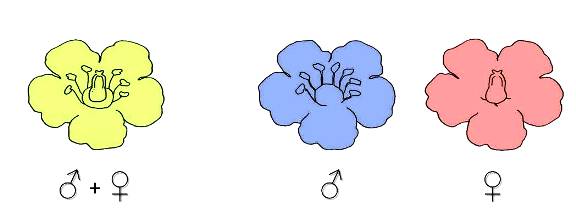
A perfect flower has both male and female parts (left) while imperfect flowers have either male or female parts
(illustration by Cara Dawson)
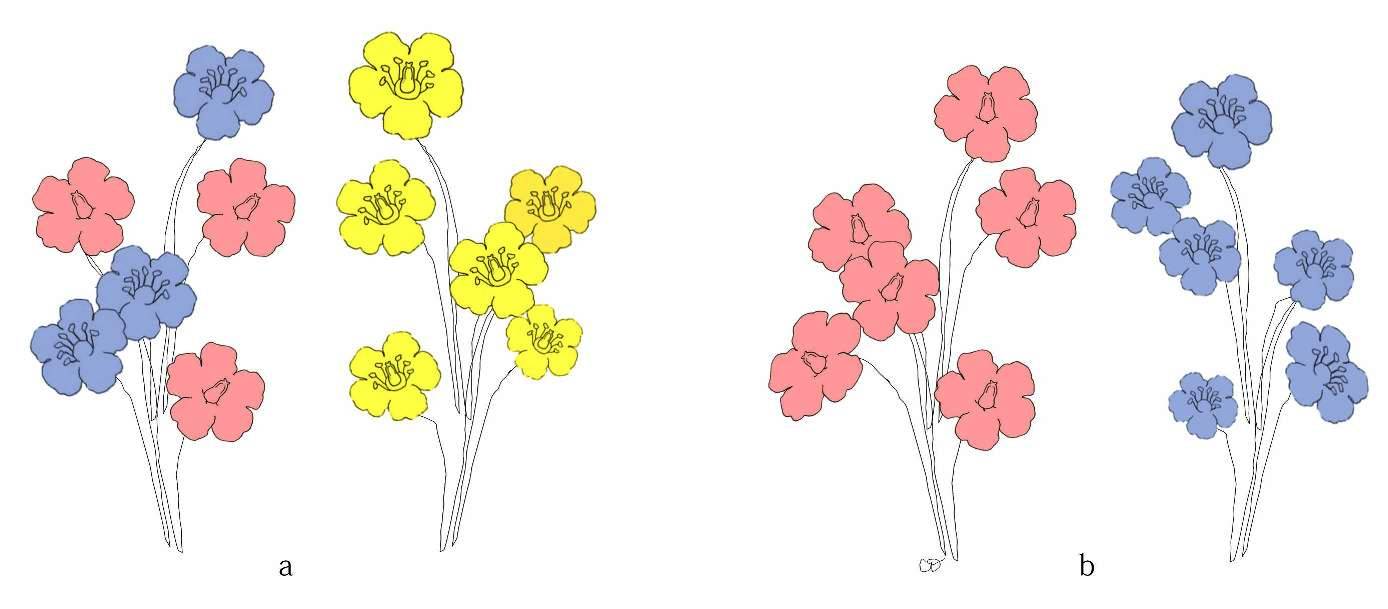
(a) Example of a monoecious plant species with separate male and female flowers (left) or perfect flowers (right) on the same plant. (b) Example of a dioecious species, in which male and female flowers are located on separate plants (illustration by Cara Dawson)
Inbreeding (self-fertilization or fertilization by close relatives) can reduce the vigour and health of living things. An inbred plant may perform poorly and leave fewer offspring. In a crop plant, this may mean lower yields. While plants do not suffer as rapidly or severely from inbreeding as animals do, most have ways to reduce or eliminate the possibility of self-fertilization. Self-fertilization is usually only a back-up mechanism in case cross-pollination does not occur. The most effective way to ensure cross-fertilization is for plants to be dioecious, but these plants have no alternative in the event that cross pollination does not occur.
There are many different ways that plants avoid self-fertilization. These include physical separation of male and female flower parts on the plant, or staggering the fertility of male and female flowers over time. Some plants may prevent self-fertilization by chemically preventing germination of their own pollen on the stigma.
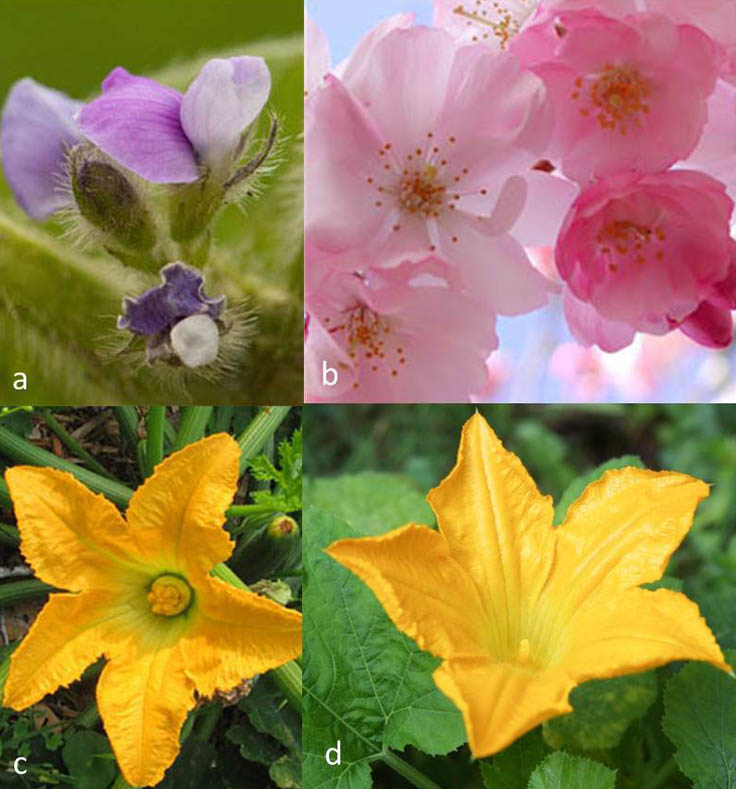
Examples of perfect and imperfect flowers: a) perfect flower (legume); b) perfect flower (crab apple); c) imperfect female squash flower; d) imperfect male squash flower.
